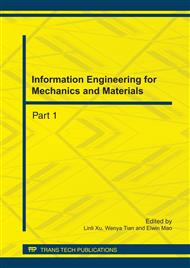[1]
M. Sallah, J. Peddieson, S. Foroudasan, A mathematical model of autoclave age forming, 7th Int. Confer. Comput. Aided Prod. Eng. 28(9) (1991) 211-219.
DOI: 10.1016/0924-0136(91)90220-9
Google Scholar
[2]
M.C. Holman, Autoclave age forming large aluminium aircraft panels, J. Mech. W. Technol. 20 (1989) 477-488.
DOI: 10.1016/0378-3804(89)90055-7
Google Scholar
[3]
R. Dif, B. Bes, D. Daniel, Ph. Lassince, H. Ribes, Improving the forming characteristics of aluminium sheets for aerospace applications, Mater. Sci. Forum. 331-337 (2000) 483-488.
DOI: 10.4028/www.scientific.net/msf.331-337.483
Google Scholar
[4]
K.C. Ho, J. Lin, T.A. Dean, Modelling of springback in creep forming thick aluminum sheets, Int. J. Plast. 20 (2004) 733-751.
DOI: 10.1016/s0749-6419(03)00078-0
Google Scholar
[5]
P.D. Pitcher, C.M. Styles, Creep age forming of 2024A, 8090 and 7449 alloys, Mater. Sci. Forum. 331-337 (2000) 455-460.
DOI: 10.4028/www.scientific.net/msf.331-337.455
Google Scholar
[6]
A. Levers, A. Prior, Finite element analysis of shot peening, J. Mater. Process. Technol. 80-81 (1998) 304-308.
DOI: 10.1016/s0924-0136(98)00188-5
Google Scholar
[7]
W.F. Hosford, S.P. Agrawal, Effect of stress during ageing on the precipitation of θ' in Al-4 wt pct Cu, Metall. Trans. A (Phys. Metallurgy Mater. Sci. ). 6(3) (1975) 487-491.
DOI: 10.1007/bf02658406
Google Scholar
[8]
B. Skrotzki, G. J. Shiflet, EA. Jr. Starke, On the effect of stress on nucleation and growth of precipitates in an Al-Cu-Mg-Ag alloy, Metall. Trans. A (Phys. Metallurgy Mater. Sci. ). 27A(11) (1996) 3431-3444.
DOI: 10.1007/bf02595436
Google Scholar
[9]
A.W. Zhu, E. A. Starke Jr, Stress aging of Al-χCu alloys: Experiment, Acta Mater. 49(12) (2001) 2285-2295.
DOI: 10.1016/s1359-6454(01)00119-7
Google Scholar
[10]
A.W. Zhu, E. A. Starke Jr, Materials aspects of age-forming of Al-χCu alloys, J. Mater. Process. Technol. 117 (2001) 354-358.
Google Scholar
[11]
D. Bakavos, P. B. Prangnell, B. Bes, et al., Microstructural interaction during stress ageing a 7475 aerospace alloy, Mater. Sci. Forum. 519-521 (2006) 333-338.
DOI: 10.4028/www.scientific.net/msf.519-521.333
Google Scholar
[12]
D. Bakavos, P. B. Prangnell, B. Bes, F. Eberl, S. Gardiner, Through thickness microstructural gradients in 7475 and 2022 creep-age formed bend coupons, Mater. Sci. Forum. 519-521 (2006) 407-412.
DOI: 10.4028/www.scientific.net/msf.519-521.407
Google Scholar
[13]
Z. H. Li, B. Q. Xiong, Y. A. Zhang, et al., Microstructural evolution of aluminum alloy 7B04 thick plate by various thermal treatments, Trans. Nonferrous Met. Soc. China. 18 (2008) 40-43.
DOI: 10.1016/s1003-6326(08)60008-4
Google Scholar
[14]
D. Feng, in Metal Physics(Vol. 3), edited by Sci. Press, Beijing, (1999).
Google Scholar
[15]
R. Song, Current status and trends in high strength aluminum alloy research, Mater. Rev. 14 (2000) 20-21.
Google Scholar
[16]
R. Tian, Z. Wang, in Aluminum Alloys and Their Fabrication. Edited by Cent. S. Univ. Technol. Press, Changsha, Hunan,(2000).
Google Scholar
[17]
K. Shen, Z. Yin, T. Wang, TEM study on microstructure development of single-ageing 7055 aluminum alloys, Trans. Nanjing Univ. Aeronaut. Astronaut. 24 (2007) 265-269.
Google Scholar


